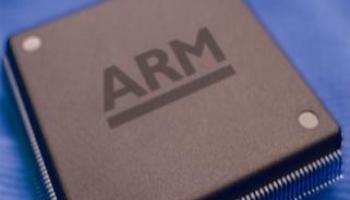Early versions of Calxeda’s ARM-based server chips will be reaching OEMs later this year, and some early systems sporting the chips could appear on the market soon after that, according to Calxeda executives.
Calxeda engineers “are still cranking on code”, according to Karl Freund, the former Hewlett-Packard and IBM executive who now is the startup’s vice president of marketing. The result will be processors that offer relief for companies that that need high performance and lower power costs.
10-times performance-per-watt gain
“We’re pretty confident in a 10-times performance-per-watt advantage [over traditional chips from Intel and AMD] in the marketplace for applications that we target,” Freund said in an interview with eWEEK.
Calxeda is one of several smaller companies looking to bring ARM processor designs into the data centre, currently the dominion of Intel and AMD. ARM-based chips dominate the mobile handset and tablet spaces, but now ARM and its customers want to bring the performance-per-watt capabilities to servers, particularly in such areas as cloud computing, web serving, big data and content delivery.
In an interview with Bloomberg News in December 2010, ARM chief executive Warren East predicted that ARM-based processors would begin eating into Intel’s dominant server market share by 2014. In addition, Marvell executives in November 2010 introduced its quad-core Armada XP, which they said is the fastest ARM processor and is aimed at such environments as cloud computing and web serving.
Nvidia officials also said in January that they are looking to ARM designs to build CPUs for everything from tablets to servers.
Richard Fichera, an analyst with Forrester Research, is high on Calxeda. In a blog post on 11 March, Fichera noted the 10-times performance-per-watt advantage Calxeda officials believe their chips will have over competing products when they hit the market.
“Claims of future performance against current competition are always subject to some level of scepticism, but Calxeda’s performance models that they shared with us appeared to be conservative and to have factored in a generous margin for competitors Intel and AMD to improve their performance per Watt metrics,” Fichera wrote. “Actual benchmark performance will probably be all over the map, considering that x86 vendors have immense accumulated experience tuning benchmarks for their platforms and the ARM community is still in early days on performance tuning.”
However, he Calxeda’s technology reinforces his high expectations that ARM-based products can make an impact in the data centre, and that businesses “should include ARM servers in their strategic technology plans”.
Promises and risks
Some OEMs also are keeping an eye on the developing ARM-based server push. Forrest Norrod, vice president and general manager of Dell’s Data Centre Solutions business, said an in interview with eWEEK that moving to such an alternative architecture carries promise and risks, but could prove to be a boon to hyperscale computing environments that need highly energy-efficient systems.
Calxeda’s SoC (system on a chip), being built on ARM’s Cortex-A9 design, will enable OEMs to build servers that will offer 120 quad-core ARM nodes – or 480 cores – in a 2U (3.5-inch) form-factor, with an average power consumption of about 5 watts per node, Freund said. Such a system, which he will consume about 600 watts, will offer the same performance as a full rack of x86-based servers that consume about 4,000 watts.
Such numbers have changed conversation with customers and end users since last year, when officials with Calxeda – then called Smooth-Stone – first began publically talking about their plans.
“Before the response was, ‘Are you crazy?'” Freund said. “Now the response is, ‘When can we get one?'”
He said the move from traditional x86-based systems to more highly energy-efficient servers running on ARM-based processors will prove to be a significant change in the hardware market, similar to when Unix systems started taking business away from mainframes, when x86 began to challenge Unix, and when Linux hit the scene, threatening Microsoft’s Windows OS.
“It’s going to be a major industry shift,” he said.






